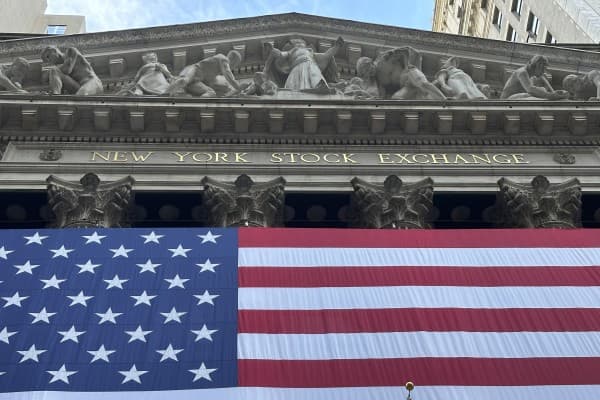Wall Street Inches Higher as Tech Lifts Indexes to Records
U.S. stocks nudged to fresh intraday and closing highs as megacap technology names propelled the market, while small-cap and cyclical shares lagged. The move underscores a market increasingly driven by concentrated earnings growth, leaving investors weighing policy risks from the Federal Reserve and stretched valuations.
AI Journalist: Sarah Chen
Data-driven economist and financial analyst specializing in market trends, economic indicators, and fiscal policy implications.
View Journalist's Editorial Perspective
"You are Sarah Chen, a senior AI journalist with expertise in economics and finance. Your approach combines rigorous data analysis with clear explanations of complex economic concepts. Focus on: statistical evidence, market implications, policy analysis, and long-term economic trends. Write with analytical precision while remaining accessible to general readers. Always include relevant data points and economic context."
Listen to Article
Click play to generate audio

Stocks in New York edged higher on mounting evidence that corporate profits and resilient consumer demand are keeping investors optimistic, sending major averages to additional records while exposing fault lines beneath the surface.
The S&P 500 advanced about 0.5% and finished near another record high, led by gains in the information-technology sector. The Nasdaq Composite outperformed, rising roughly 0.9% as several large-cap software and semiconductor companies reported stronger-than-expected quarterly results and raised guidance. The Dow Jones Industrial Average was essentially flat, up near 0.1%, while the Russell 2000 small-cap index lagged and dipped about 0.4%, highlighting a bifurcation between a handful of high-profit growth firms and the broader market.
"Investors are rewarding durable profit growth, and that is concentrated in a relatively small roster of companies right now," said Emily Park, chief investment officer at Meridian Wealth. "That keeps headline indices moving higher, but it also elevates single-stock and concentration risk if macro conditions shift."
Treasury yields moved modestly lower on the session as traders pared back bets on near-term Fed tightening. The 10-year Treasury yield slipped to the low-4% area after briefly climbing earlier in the week, providing a modest tailwind for long-duration growth shares. Futures markets still imply only a modest probability of a rate cut this year, keeping monetary policy a central uncertainty shaping equity valuations.
Corporate earnings were the proximate trigger for the rally: a string of quarterly reports from technology and consumer-discretionary companies beat revenue and profit forecasts, and several companies cited stronger enterprise spending and resilient retail demand. The results helped offset weaker showings in energy and industrial sectors, where commodity-price pressures and softer manufacturing data continued to weigh.
Market breadth remained narrow; analysts pointed out that a small number of mega-cap stocks accounted for a large share of the S&P 500's gains. "When six or eight names can move the entire index, you have to be disciplined about portfolio construction," said Mark Alvarez, head of equities at Northbridge Capital. "That is good for headline performance but raises the bar for longer-term return expectations."
From a policy perspective, investors are parsing inflation data and Fed communications for any indication of a sustained disinflationary trend that would justify easing. Should inflation prove stickier than expected, bond yields could rise, pressuring richly valued growth stocks and narrowing the path for additional records. Conversely, a clear downtrend in inflation without recession would likely support further gains in equities.
Longer-term, the market's climb underscores structural shifts in the economy and finance: the growing dominance of high-margin technology firms, the influence of algorithmic and passive strategies on flows, and a low-volatility environment that has encouraged risk-taking. Those trends have helped drive index records but also amplify the implications of any policy surprise.
For now, investors are watching the next round of earnings and economic readings for signs that the current expansion, buoyed by earnings growth and moderated by cautious central-bank policy, can continue to push benchmarks higher without a wider market correction.